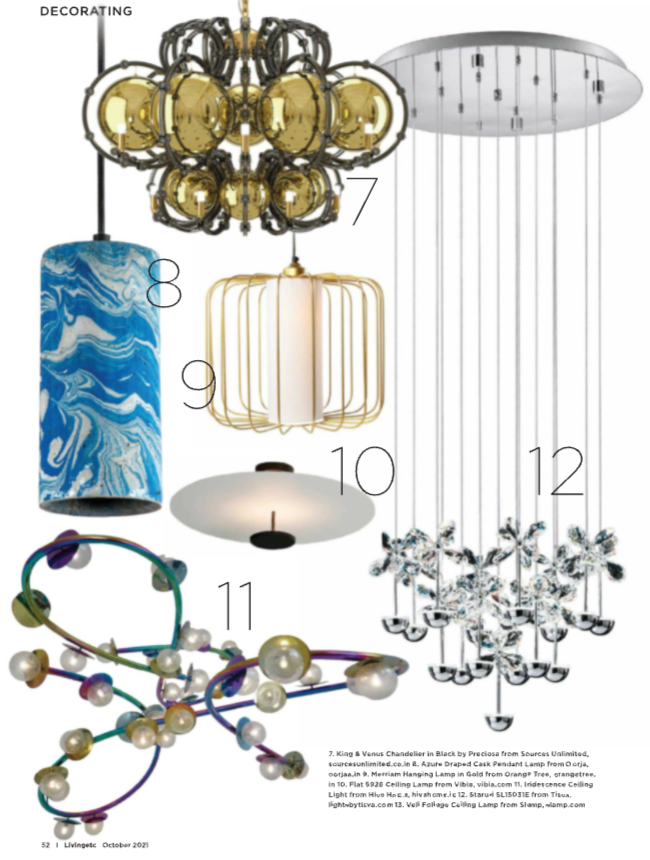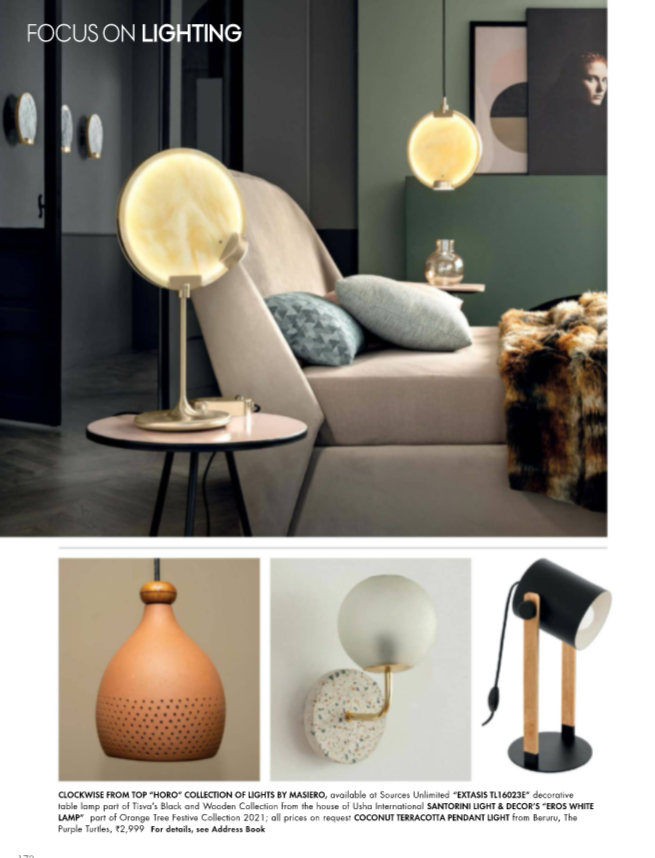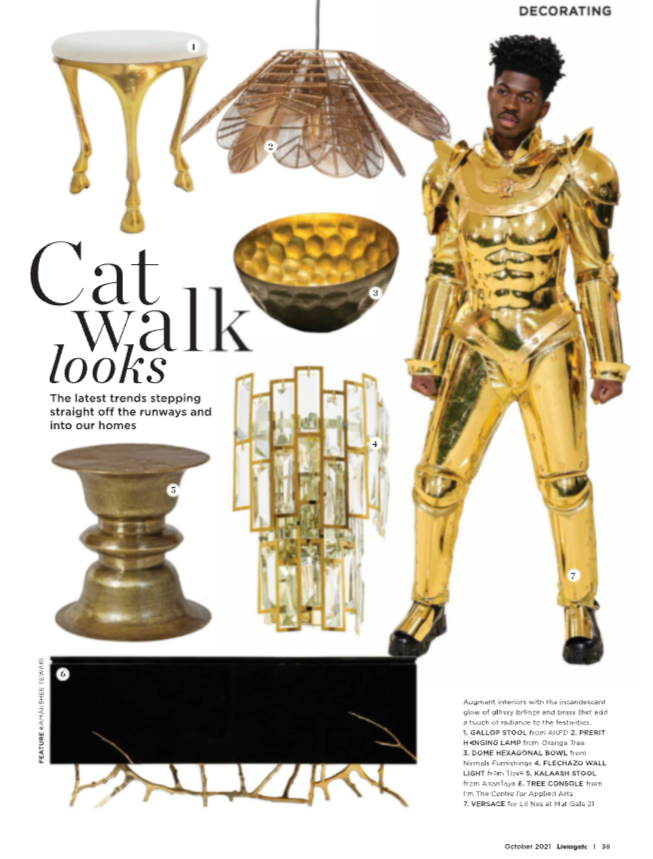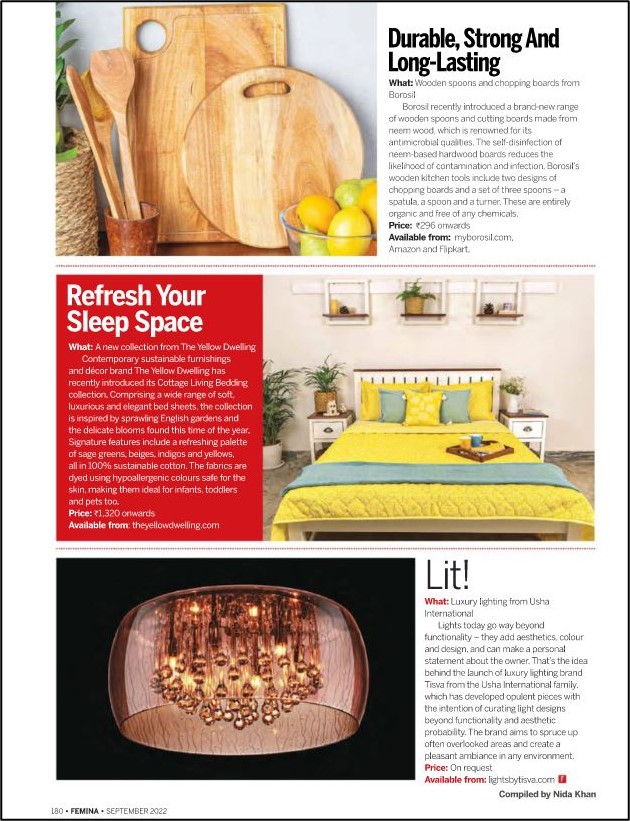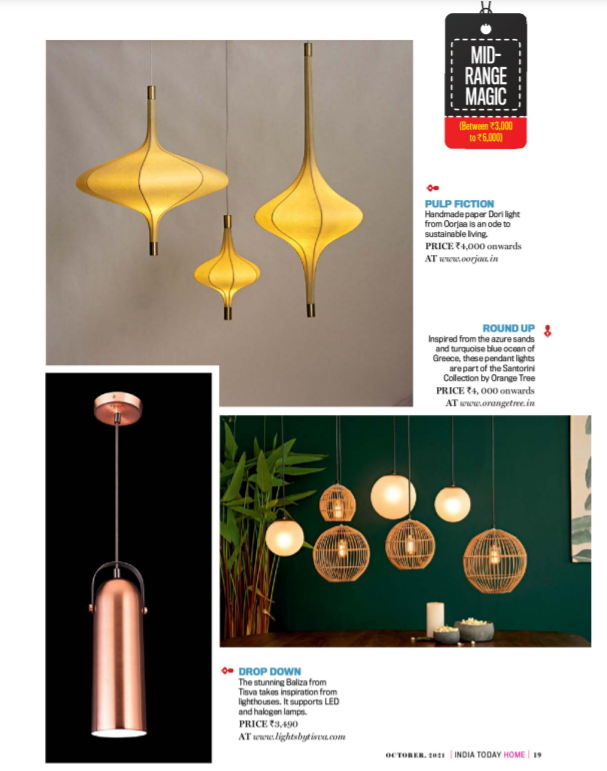Light sources that have built in optical systems are called Directional Sources or Reflector lamps. Ar, MR, PAR and R lamps are a few examples. Light sources which lack such in-built systems require external devices to modify the direction of light in order to make them useful for architectural applications.
These modifications serve two purposes. 1. Direct light to the necessary space and 2. Block light where it is unwanted, thereby avoiding glares. This can be achieved through 3 different methods: Reflection, Transmission and Refraction.
Reflection
Reflection occurs when light bounces back from a surface. Light can be controlled by three different kinds of reflection: Specular, Semi-Specular and Diffuse.
Specular Reflection
When light bounces of a highly polished surface Specular Reflection occurs. In this type of reflection just the direction of the light beam is changed. Example of a Specular surface is the mirror. In Specular Reflection the angle of incidence is always equal to the angle of reflection. This property makes Specular surfaces best for directing light to precise places.
Specular surfaces are invisible in themselves, reflecting back whatever bounces off it. This kind of surfaces may at times appear dark or bright depending on surrounding luminance and angle of the view.
Semi Specular (spread) Reflection
These surfaces partially disperse or spread the light beam that strikes it. Semi-Specular objects have an irregular surface, which have been hammered, sandblasted, brushed etc. Like Specular Reflection, these surfaces reflect back the highest intensity of light at an angle, which is very close to the incidence angle.
These surfaces generally feature highlights or streak of high intensity light over a background of low intensity light. In interior décor they are used to add sparkles. In luminaries they produce a smooth controlled beam.
Diffuse Reflection
Diffuse Reflection occurs when light is reflected from each point of the surface in all directions. The maximum intensity of reflected light is always perpendicular to the surface in such objects. The best natural example of Diffuse Reflection is sand on the beach – there are no bright spots and light is reflected equally in all directions. In interior décor this type of reflection occurs from walls, ceilings and work surfaces. In luminaries it is used to produce wide distribution of light.
Reflector Contours
Specular and Semi-specular objects use geometric shapes to direct light in luminaries. They use the law of reflection to control light, which states that the angle of incidence is equal to the angle of reflection. Specular reflection is the primary method used in luminaries to re-direct light. It takes light which would otherwise be lost or wasted inside the luminarie and directs it outward to the necessary space. In addition it also produces uniform distribution of light in form of room brightness patterns. The most commonly used geometric shapes in luminaries are ellipses, parabolas and circles. These shapes are either used as themselves or slightly modified to suit the luminarie.
Elliptical Contours
Ellipses have two focal points. A ray of light originating from one focal point is reflected through the second focal point. This causes a divergent beam to emerge. The spread or distribution of light is dependent on the distance between the two foci points. Elliptical Contours are generally found in Downlighters.
Parabolic Contours
The parabola is a form of ellipse where the two foci points are very far apart. The ray of light here is directed parallel to the axis of the reflector. This produces a series of parallel beams of lights. The area of spread is dependent on the light source and the size (diameter) of the reflector. Such Contours are used in search lights, spot lights and where concentrated beam with limited spread is required. At times the parallel beams are further passed through a diffusing or a refracting lens as used in Reflector lamps.
Circular Contours
Circles too are a type of ellipse, where the two foci points are together. Therefore it is the opposite of a parabola where the points were very far apart. In Circular Contours a ray of light originating at a foci point is reflected through the same point. Circular Contours are used alone or in combination (with another contour) reflectors called Compound reflectors to re-distribute light which would otherwise be wasted due to misdirection or being trapped.
Other Reflector Contours
Compound Reflectors provide maximum beam spread. They are useful to produce uniform light from a place closer to the surface, For example – lighting up low-height ceilings.
There are innumerable other contour shapes that can be mathematically defined and tailored to suit different types of function.
Reflectors: Specular Reflectors
While finding a suitable size and shape, all Reflectors assume a point to be the source of light, when this point is small and compact like that of Incandescent lamps the reflector design becomes easy. However when the source is large like Discharge lamp, where the entire body emits light, reflector design becomes complicated. In earlier times reflectors were made by trial and error method using mathematical equations on geometric shapes. Today manufactures use computers to design even the most complicated Reflectors easily.
Semi-Specular Reflectors
Although Clear Incandescent lamps use specular reflectors to control light direction, the resultant beam features a few irregularities which needs to be smoothen out. These marks/striations generally are the reflection of the filament coil of the bulb. Semi-Specular Reflectors are used to correct such striations by diffusing the beam of light slightly. This can be achieved through three types of semi-specular surfaces. 1 An inside-frosted lamp. 2. Etched or faceted surface or 3. By adding a diffusing lens.
Diffuse Reflectors
The reflection of light from diffuse surfaces is multi-directional. Thus, shapes or contours do not affect the distribution or direction of light in Diffuse Reflectors. These are at times used in luminaries to provide uniform brightness, though they cannot direct light towards other specified surfaces.
Reflector Materials
Aluminum is the most commonly used material for making Reflectors, as it can be shaped into any geometric contour. It can also be chemically or electronically processed to make it specular, sandblasted or etched to make it semi-specular. Lastly an anodizing process gives it a hard protective surface of high transparency to avoid scratches and abrasions.
Transmission
Transmission of light through a material is affected by two factors: 1. The Rays that the surface reflects and 2. The rays that the object absorbs and re-directs (refraction) within the material. Just like reflection, even the degree of transmission varies, from complete transmission by transparent objects to diffuse transmission by translucent objects.
Direct Transmission
Direct Transmission is seen in transparent objects that leave the light distribution unchanged. These surfaces are used as protective covers to shield out infrared or ultraviolet rays and also to get light of certain colours. Since the light source is visible through these materials (clear glass, plastic etc.) any glare if present in the light source cannot be avoided.
Semi-diffuse (Spread) Transmission
A slight re-direction of the light beam occurs when semi-diffuse materials are used. This happens when light touches the minor irregularities that are present on the surface (by virtue of which these materials get their semi-diffuse properties). These irregularities can be in form of facets and flutes. Other irregularities such as etching, sandblasted, hammering and matte surfaces cause a greater degree of diffusion. Semi-diffuse surfaces conceal the lamp (light source) and also remove glare.
Diffuse Transmission
These surfaces diffuse light in all directions. Opal glass and plastics with microscopic particles that remove directionality of the light beams are two surfaces that allow complete diffusion.
Refraction
When light rays pass through different mediums, the speed of light changes, which causes refraction. Thus a straw in a clear glass of water will appear to bend, as light moves from air to water. A similar refraction occurs when light passes from air to glass or plastic. These materials can be manipulated to change the direction and distribution of light.
Prisms
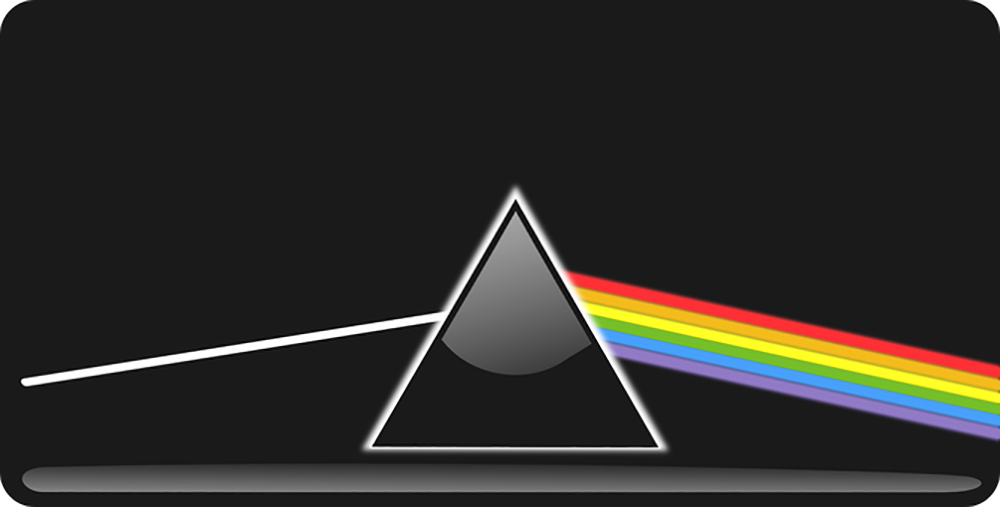
If light is passed through two refracting surfaces, which are parallel to each other, the two refractions (along the parallel surfaces) cancel each other out. However if light is made to pass through two similar surfaces, which are not parallel to each other, it will change the direction of the beam.
When light enters a medium which has a higher refraction index (capable of causing a higher degree of refraction), than its initial medium, the direction of change is more perpendicular. For light entering a medium with lower refraction index, the resultant direction is way from the perpendicular.
Prisms are transparent bodies which have non-parallel surfaces. A light beam that enters through one surface, exits in a completely different direction through the other surface. The direction of the exit beam can be controlled by manipulating the angle between the two surface.
Lenses
A lens is formed by two opposite refracting surfaces that share a common axis. There are two types of basic lenses Concave and Convex.
The Convex lens takes its name from the word converging, and can be referred to as the positive type of lens. These types of lenses are thicker in the middle than their edges. Convex lens converge diverging light beams into parallel beams.
Concave lens, also known as negative or divergent lens is thinner in the middle and thicker at the edges. It causes parallel light beams to diverge.
Fresnel Lens, named after its French inventor Agustin Jean Fresnal, consists of a series of concentric lenses. When used in luminaries, they produce a concentrated beam with reduced brightness, thereby controlling glare. In these kind of lenses if the light source is placed on the focal point it will emit parallel beams of light. If the light source is placed in any other place than the focus point, it emits asymmetrical or diffused rays.
Glasses and plastics that feature small prism patterns or other such refractive surfaces are called Prismatic lenses. These lenses increase the distribution/spread of light and reduce the luminance of the light source, thereby controlling glare.
Total Internal Reflection
Total internal reflection occurs when light passes through a transparent surface such as plastic or glass and travels forward by getting continuously reflected within it from side to side. Edge reflection and light transmission through rods are two examples.
Fiber Optics
In fiber optics, light entering one side of the wire is transmitted to the other end through Total Internal Reflection. Light rays are reflected back and forth inside the core and travel from one end to the other.
Instead of using a single core with a large diameter, fiber optics uses multiple small cores. This gives it more flexibility. In order to avoid light leaking from one core to another, a sheath separator is used that has lower refraction index than the fiber.
There are two types of optical fibers: coherent and incoherent. In Coherent bundles the entrance and exit cores at both ends are placed exactly in the same way. Since each core transmits light to the same position from one end to another, images can be transmitted through such fiber optics. Incoherent bundles feature a random arrangement of fibers. Hence, these are incapable of transmitting images.
A typical fiber optics lighting system contains the following: 1. A light projector. 2. A tungsten Halogen or Metal Halide light source. 3. An optical fiber harness. 4. A fitting for each bundle. And 5.Bundles of optical fibers
Glare Control
Sometimes the lens or reflector of the light source can be used to control the glare and conceal the light source. Some ways to achieve this is as follows:
Baffles and Louvers
Baffles and Louvers shield light at normal viewing angles, making the experience more pleasant. Baffle is a type of panel that shields light from one direction. If the light source is small Baffles are capable of shielding it all around. Louvers are a series of baffles placed geometrically such that direct light is shielded across all directions.
Such shielding helps to conceal the light source and reduces glare in a certain zone, this is called the shielding angle. This is the highest angle that the eye can view without seeing the primary light source. However Baffles and louvers do not prevent horizontal surfaces below the light source from reflecting back glare.
Baffles and Louvers can be coated black or made of reflective or transmitting materials, depending on the desired result. To control glare, conceal lamp and get maximum diffusion of light use open louvers, or plastic or glass with a slight degree of diffusion.
Reflectors
An opaque (light-blocking), black Reflector will also act like a Baffle. A reflector’s shape, will affect how the visible surface of the lamp’s interior looks. If the reflector’s surface redirects light towards the eye, it will give high luminance and produce glare. If light is directed downwards away from the eye, it will result in low luminance without any glare.
Most efficient reflector designs incorporate source shielding by extending the surface of the reflector. This increase in depth of the reflector reduces a little efficiency due to light absorption along the extended surface. But since the light that is emitted is controlled, it is much more useful.
Parabolic Reflectors are also used to control glare. In this type of reflectors most of the light is directed downwards away from the eye. This gives it the illusion of lower brightness when seen from normal viewing angles.
Diffusion along the reflector surfaces caused due to etched or brushed surface will increase the luminance of the lamp but will also direct light towards the eye.


